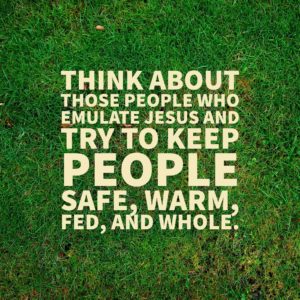The Rev. Ian Burch
Easter 4A
St. Mark’s Episcopal Church | Milwaukee, WI 53212
May 7, 2017
This is Good Shepherd Sunday. Usually on this Sunday of the year, the hymns or anthems will make a nod toward sheep or a friendly shepherd. And for those of us who can get a little lost in a metaphor, this one is pretty straightforward: Jesus is the Shepherd, and we are the sheep. Regardless how you feel being compared to livestock, that’s the gist of this Sunday’s lessons every year.
Enter a seeming non-sequitur. To make this next point, I have to give you a little background in church architecture, so get comfortable. It’s fascinating, I promise. Every Episcopal church everywhere―and every Catholic church and most Lutheran churches for that matter―is going to have a place to put the bread and the wine that is left over after we receive Holy Communion. We tend to pray over or consecrate more bread and wine than we need on Sunday so that, during the week, we can bring Communion to those who are in need or who can’t get to church for whatever reason. The special place where we put the blessed bread and wine is sometimes a big gold box on the altar, or sometimes a smaller box fit into a wall. Here at St. Mark’s, we have the wall kind. It looks sort of like a safe. Ours is gold and has a big key so that everyone knows that what sits inside of it is important. We even light a candle above it whenever we have bread and wine present so that we can remember that God is with us in a special way in the bread and the wine. When the box sits on the altar, it’s called a tabernacle; when the box sits in a wall, it’s called an aumbry. Here endeth the lesson.
My last parish also had a special wall box, or aumbry, for the bread and the wine. It was a gift given to the parish after World War II in memory of one of the young men who died in that conflict. It is a gorgeous piece of art―all carved light and dark wood―depicting Jesus with his Shepherd’s staff herding the sheep. We called it, possibly unimaginatively, the Good Shepherd Aumbry.
Now, here’s the rub: for most of the life of my last church, the congregation was not in the habit of having Communion every Sunday. They often met to share Sunday morning Prayers with no communion, so for decades this Good Shepherd aumbry sat empty. And in fact, it was used so infrequently, that most of the people at that church had forgotten what it was, until an interim priest came in a few years ago, found the key, and opened it.
The big wooden box did not have the bread and the wine blessed and made holy in it as you might expect. Instead, someone, with a very practical sensibility, had placed a first aid kit in it along with a portable defibrillator. I used to think this was kind of a great gag. There was something funny to me about this great, storied, piece of liturgical furniture being used as essentially an extra storage closet.

But as I thought about it some more, I decided that the symbol of the first aid kit in the Good Shepherd Aumbry is both rich and instructive. After all, don’t we come to this table for healing, for solace, for love? Isn’t it God who we ask to start our hearts up again when they’re made of stone and to tend our wounded selves?
It might be hard for the modern congregation to get at an image of God that relies on Shepherds. I know shepherds watched their fields by night at Christmas time, but, really, I don’t know anything else about them. The image and the metaphor only have some much power in an urban setting like ours.
But what about God the nurse. Or Jesus the physician. Or the Holy Spirit the EMT. Perhaps thinking about God in these ways will help us better understand what it is the early Christians were trying to convey when they talk about Jesus as the shepherd to gathers and tends to the sheep.
Imagine a nurse doing her rounds at 3 in the morning while all the patients on floor sleep. Imagine medical techs and support staff coming every few hours to take blood pressure and adjust pillows; give pain medication and hold the hands of those who are lonely or dying.
Maybe this is a richer way to get at what the Gospel writer is hoping to convey about God. God is tender. God is caring. God is attentive. God is protective. God has come so that we might have life and have it more abundantly, as the Gospel says today.
As you move through this week, by all means, think about Jesus the Good Shepherd. Think about the safety and care that God intends. Think about the bandits and thieves out in this world who try to disrupt the paddock. Think about those people who emulate Jesus and try to keep people safe, warm, fed, and whole. They are all Good Shepherds, modeled after our savior Jesus.
But if that image isn’t quite letting you enter into the story, spend some time think about Jesus the night nurse…patrolling the ward, giving care to all who need it. Regardless of ability to pay or pre-existing conditions. Regardless of age, race, creed or ability. Think about this nurse bringing abundant life from room to room. And as we think on Jesus the nurse, maybe we will get a better sense of this God of ours who loves us beyond any sense or reason. Maybe we will think about this God who gives of Godself so that we might go and do likewise.
I doubt I’ll start keeping the first aid kit in our aumbry any time soon. I’m too much of a traditionalist for that. But I am ever so grateful for the person, many year ago, who thought that the same place we put Jesus could very well house a first aid kit―a kit for the care of the people of God. ‘Cause that is our vocation; to love and help the people of God―whether Shepherd or Nurse―Amen.

Leave A Comment
You must be logged in to post a comment.